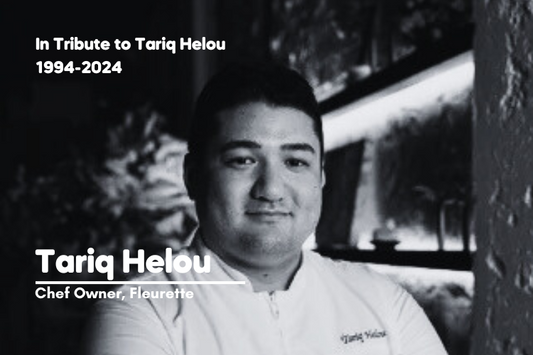'Ricing' To The Occasion
Share

We speak to:
Kevin Wong
Chef-Owner of Seroja
“We are not very sake forward, to be honest,” says Kevin Wong, who established Seroja in 2022. Its name means lotus flower in Malay, and the restaurant celebrates the tapestry of shared ideas and influences unique to this region. As chef-owner, Kevin has since gone on to win the Young Chef Award, Green Star and 1-Michelin star at the 2023 Michelin Guide ceremony.
With 10 sakes listed on Seroja’s menu, what Kevin and his sommelier David Tu Tranh is aiming for is a balance of beverages to cater to everyone, from wines to sakes and especially the non-alcoholic options. It’s just part of the hospitality mindset of the humble chef. And he is in good company as well, because other similarly modern establishments such as Nouri and Fleurette also have a small, but quality list, of sakes to cater to their discerning guests.
Kevin grew up in Klang, inspired by the multicultural cuisines he enjoyed. He honed his skills in three-Michelin-starred Coi Restaurant and Benu in San Francisco before moving to Singapore to join Chef Andrew Walsh at Cure. In 2017, he joined Chef Sun Kim at Meta, climbing his way up the ranks from junior sous chef to head chef. While representing Asia at the S.Pellegrino Young Chef Academy Competition in 2021, landing in the top 3 in the world finals, he was profoundly influenced by the research he did as he spoke to farmers, hawkers, craftsmen and artisans from around the Malay Archipelago.
“I knew about sake for awhile but my first time sipping sake was in San Francisco when I was working for a restaurant called Benu,” Kevin recalls. “I didn't like it on my first taste!” Upon receiving a Den Katsuyama as a gift for one of his birthdays, that became the first time he savoured a sake, after which he got really into sushi. “So it was nice to explore more about sake and how the taste changes even when the temperature changes,” he says.
At Seroja, there are many guests requesting for sake, although the restaurant doesn’t really carry out pairing flights. Kevin affirms that to him, it is important to pair a good beverage to his cuisine as it enhances the dining experience and can even act as an extension to the dish. “Since we use many forms of rice at Seroja, I strongly believe sake does work very well with SEA cuisine,” he tells us. These include a rice dish for the main course that uses native rice called Sia rice by the Lun Bawang tribe of Sarawak, as well as a dessert called tapai, in which they ferment glutinous rice.
While Kevin considers himself in the exploratory stage of sake, he foresees that there are myriad possibilities to further pair the beverage with more dishes in Southeast Asian cuisines in future, as more sommeliers and chefs explore these non-traditional pairings.
Trade professionals:
You are invited to attend Sake Matsuri’s Trade Show on 15 November 2024 at the iconic F1 Pit Building! Pre-register below for free.
Link: https://sakematsuri.sg/products/sake-matsuri-trade-show-friday-15th-november-2024
Sake Matsuri Trade Show
Date: 15 Nov 2024
Time: 12pm-4pm
Venue: F1 Pit Building, Garage, 1 Republic Boulevard
*Pre-registration is free, $50 for on-site entry
**Open to trade professionals only

